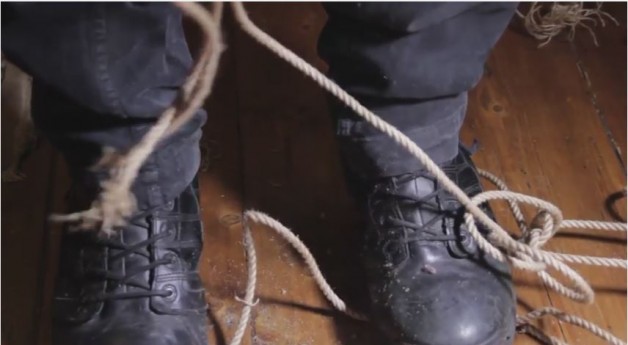This was made in order to settle some debate about the causes of failure of bondage rope. In another video, we were shown how synthetic rope could easily be cut using friction. In this example, the static part was cut due to the heat generated by friction. I wanted to test if my belief that natural fibre behaved differently was correct.
I should point out that these experiments are not scientific as the forces and speeds were not consistent. Also, only a few tests were carried out. However, the tests were repeated several times but not enough to be scientifically conclusive. I wouldn’t claim the set up replicated what happens in real life but it does give an indication of the effect of friction on natural fibre rope. The only anomaly was on one trial, the linen hemp actually broke on the static part, equivalent to the bight.
The tests that I carried out with natural fibre produced quite different results with failure occurring on the moving part. With natural fibre, a higher speed is require to generate heat, so I assume most damage was due to abrasion.
The looser the lay of the rope and the less dense, the faster the wear. The drier, the faster, with a lot of dust and squeaking due to lack of lubrication being created just before failure. I assume that the batching oil used in processing the fibre provided some residual lubrication which was quickly burned off by friction. Adding lubrication in the form of wax reduced friction and extended life.
Jute wore faster than a very tight linen hemp with a high yarn count (40 per ply) by a factor of several times. This rope also exhibited greater strength during load tests.
The ropes tested were: Asanawa, Osaka, Tossa and Amanawa (linen hemp). All available from ESINEM-Rope.com

